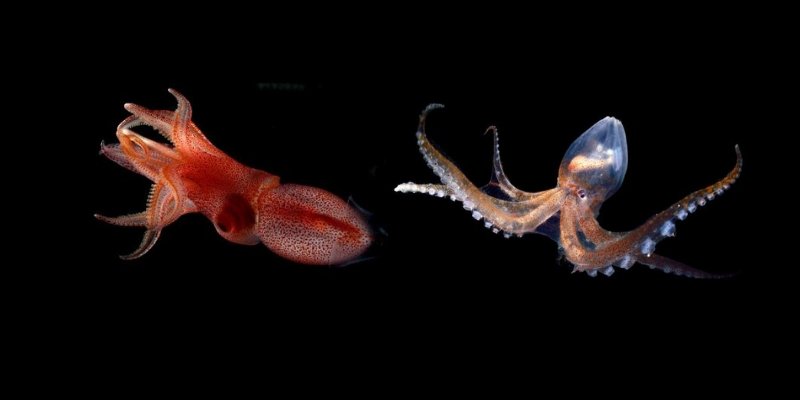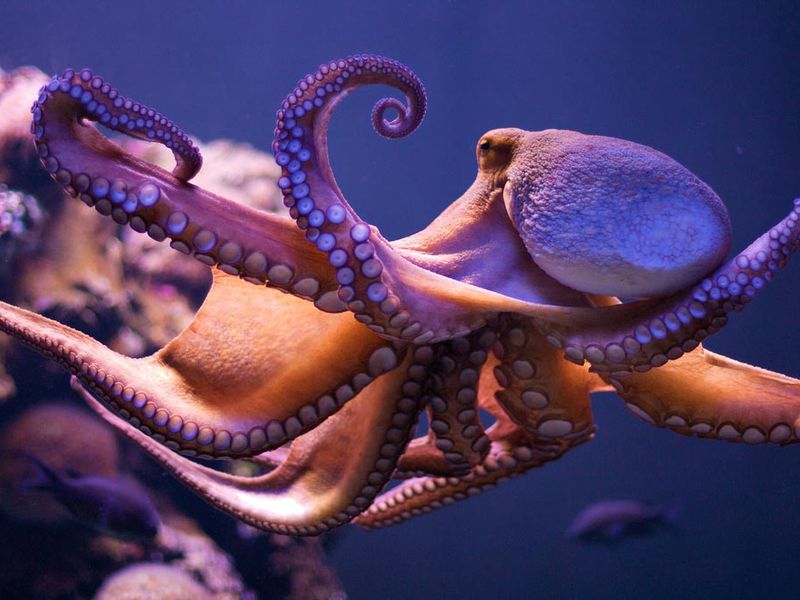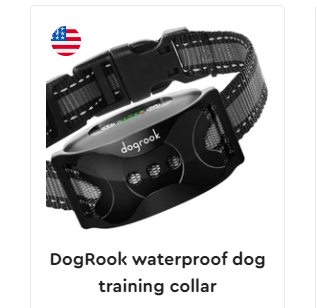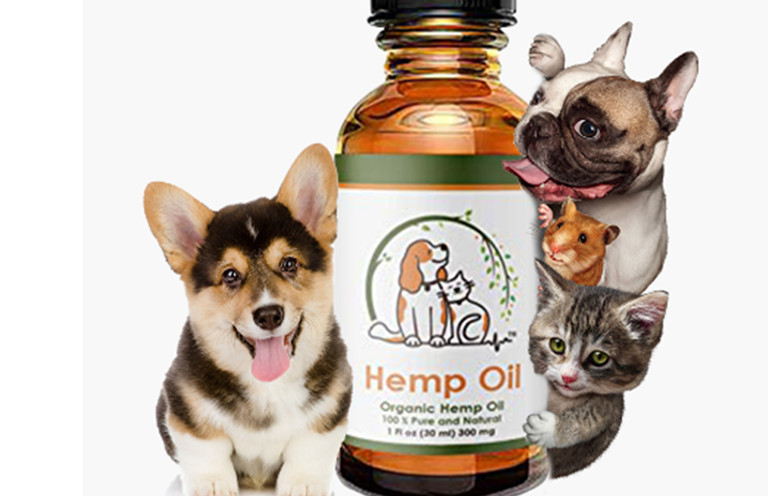People are often confused with octopus and squid, for most of the individual they are classified as cephalopods. They might resemble with one another, however, there is a difference between the two and unique hunting methods got used to catching them. So, what is the major difference between squid and octopus? It is clearly stated below in this article.
Are There Any Differences Between Squid and Octopus?
Yes there exists the difference between the Squid and Octopus that you need to know.
Squid vs octopus:
In order to assist you to understand octopuses and squid better, here we have described some of the similarities as well as the difference when it comes to anatomy, habitat, size, biological classification, and hunting behavior.
Biological classification- both octopuses and squid are cephalopods, that means they have head-footed and it has no real feet or head as the most prominent feature. They are both mollusks and invertebrates and they contain eight arms. Unlike other mollusks, they neither have a shell.
Anatomy:
The octopuses and squids are built similarly and this is how one can tell they are entirely different creatures just by the appearance. The octopus might have eight arms and a round head that radiate like spokes of any wheel. The squid also contains eight arms and a triangular head with extra long tentacles. The body is long and it contains a bony plate known as a pen which is a vestigial remnant of its shell.
You will notice that the squid also has two fins over their head however the octopus has none fins. The dumbo octopus has an ear like a fin over their head that might resemble as a large floppy ear of the elephant.
Both octopus and squids have a sucker over their arms and it has two extra tentacles that got equipped with a special sucker ring and hooks with teeth attached. Interestingly, they both have a squirt copper and ink in their blood. The copper helps in oxygen transportation within the animal’s bodies.
Size:
Most of the people believe that squids are smaller kind however the squid normally grow under 60 cm to 20 meters long. However, the smallest squid species is just an inch long. On the other hand, octopuses grow anywhere under 1 centimeter – 9 meters.
Lifespan– another key difference both squid and octopuses have is life expectancy. Both the species have a decent lifespan if their size is considered. The lifespan of squid is between nine months to five years however the octopuses can live anywhere between one to three years.
Habitat– The squid can be easily found out in several areas of sea, even from a darker depth of the ocean to shallower water. On the other hand, the octopuses prefer to live under the seafloor level whether it could be deep water or shallow waters. In fact, it is said that octopuses live in rubbish that can be easily sunk to the bottom of the floor.
Hunting behavior:
Due to the anatomical differences, the hunting techniques might vary. The squid has a habit of swimming over the open ocean in small groups and it can make use of their extra tentacles along with sucker rings in order to give them extra reach. It helps them to catch shrimp and fish then it can be easily eaten up.
On the other hand, the octopus stays over the seafloor and it eats bottom crustaceans because the soft bodies will make them vulnerable. They pierce, grab and inject poison into the body of prey and it will paralyze it. This then dissolves as well as loosens the prey through the usage of saliva before ripping it into parts.
The observation on the octopuses demonstrates that it is a solitary creature. They don’t like to live in groups thus prefer a lifestyle as “hermit”. The squid species are solitary and they travel the ocean. The way the squids, as well as octopuses, eat and catch is different.
The squid usually hunts for fish through swimming crustaceans like shrimp and it catches them with its tentacles. The prey is then consumed using the structure that is beak-like known as radula to cut into prey at their mouth. Multiple rows radula has in form of “teeth” that would help squid in grinding the prey before ingesting it. Most of the squid will hunt in coordinate and group their movement so as to maximize all the catches.
The octopuses are solitary hunters and they catch the prey over the ocean floor along with arms. They inject venom into the prey that paralyzes it. Digestive enzymes also introduce catch which softens for ingestion by octopuses.
How do squid and octopuses move?
The squid and octopus can swim in any of the direction and it can easily alter the course quickly. The squids make use of the fins that are located over their head that can be used to propel themselves when it swims. It can move at low speeds. The fins can easily stabilize and steer the squid when they move slowly and it wraps the body all around when it has to move quickly. Most of the octopuses don’t any fins.
Do the squid and octopuses live in schools?
Since solitary animals like octopuses, they live alone as den and squids live in schools. The young squids become more solitary in the future.
Additional information:
- Taste– octopuses have more taste receptors over their body as much as ten to a thousand times in comparison to humans.
- Touch– the octopuses are sensitive to touch however you cannot discriminate between the light and heavy objects.
- Sight– the squid and octopuses have excellent vision however they might be color blind. It has 360-degree vision range with eyes
- Smell- the squid and octopuses can register smell in pits that are located over the beneath eyes.
How they protect themselves?
- Coloration- they can create or change color in intricate patterns on bodies so as to blend with surroundings
- Ink– the squid and octopus can expel copper ink that is dark. This can be used to confuse the predators thus giving off octopuses and squid time to escape
This is all about the major difference between the octopuses and squids, you can know additional information on the internet.
Read Also:

























